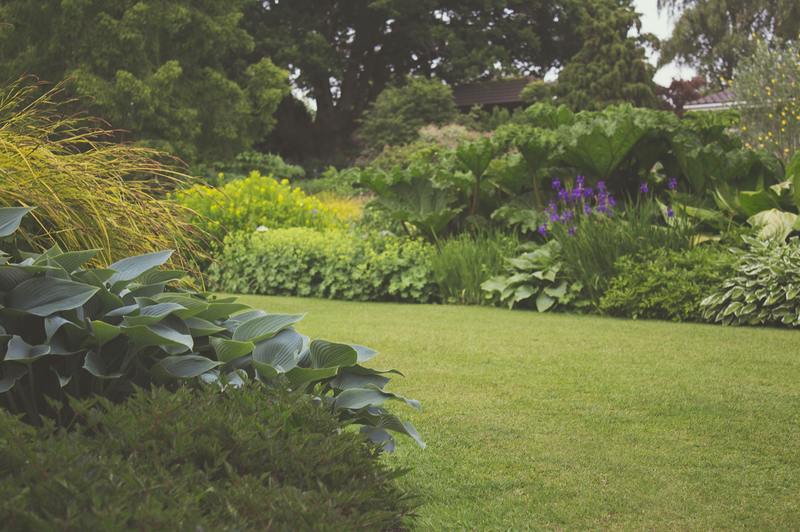A few tips on how to liven up water damaged lawn in spring include damage assessment and acting accordingly through mowing or replanting. Spring is the best season to do this as everyone’s garden is due to some major revamping to bloom in its full potential.
Due to the erratic changes in weather, it is unavoidable to have your lawn wrecked by too much water. Unless you have a large awning spread throughout your yard, your lawn may likely show signs of overwatering.

Before you give up all hope and resolve to change your once-beautiful green lawn into a sparkling pond, read along to start fixing what can still be fixed.
How To Revive A Water-Damaged Lawn
Step #1. Do the waiting game
Identify what type of soil serves as your lawn’s foundation. The soil type can range from light and sandy to heavy clay.
Is the soil of your lawn the light type? Then the water will tend to seep through and dry out quickly. However, if your soil is of the heavy type, it may take longer for the whole lawn to dry out.
This information is essential as you have to wait until your whole lawn is dry enough before fixing it. Schedule your lawn-fixing day on a week where the weather is forecasted to be fine enough.
Step #2. Assess damage
Once your lawn has dried out, it is time to assess the damage that excess water caused. To do this, get your rake and other helpful tools and start raking through your lawn.
Remove all fallen leaves and any debris or matter that isn’t supposed to be on your lovely lawn. Once cleared out, check which parts are moderate to severely damaged.
Ideally, your lawn should be a prime example of even turf of grass. Check which parts are uneven. The grass may be patchy, thin, overgrown, or stripped down bare.
Check also for the excessive growth of weeds. List down the damages your lawn suffered, and from this, you should proceed to the next step.
Step #3. Let the soil breathe
Allowing the soil to breathe can do wonders for your lawn. If you think the damage is too severe to keep the grass, this technique can be the next step to get your hands on.
Firstly, if your lawn is slow to drain water, switch your rake with a garden fork and start maneuvering it around. This technique will help speed up the draining process and open up the soil.
Next, when the soil is dry enough, you can aerate it by doing the same technique with the garden fork. Aerating the soil or letting air circulate under your lawn’s topsoil will loosen the ground compacted because of water damage. In the future, you will find your lawn’s soil having much better drainage quality with such a technique.
Step #4. Mow overgrown grass
Mowing is important to even out your lawn. If you are serious about your lawn’s upkeep, chances are you know how important it is to have a good mowing scheme. A routine of lawn mowing is stimulating for grass growth, especially when the spring season comes.
Make sure your lawnmower is in prime condition before using it. Mower maintenance is as important as the act of mowing itself. You can either do the maintenance check yourself or bring it to someone more knowledgeable to oil it and make sure it is sharp enough to cut overgrown grass.
When your mower is ready, it is time to get working. Remove only less than a third of the grass height.
Step #5. Feed the lawn
Fertilizing is an important process in planting and gardening, which means your lawn is no exemption. To take advantage of the season of spring, it is important to feed your lawn properly with all the nutrients it needs to give out that even green, green grass you want.
To have a healthy turf, choose the best lawn food or fertilizer for your lawn according to its soil type. Reapply the lawn fertilizer you have after about a month or a month and a half.
Aside from fertilizer products, you can buy in the market, mowing the lawn is also a way to fertilize it. Dried leaves and grass clippings can serve as natural compost that works if you have half the time to maintain your garden this spring.
Step #6. Start reseeding
If the water damage in your lawn is too bad that bare patches exist, planting new grass seeds is the answer. Before doing this, make sure your soil is healthy and prepared. Remove any weeds and unwanted moss and apply fertilizer first to keep the soil healthy.
You can either sow the seeds evenly throughout the entirety of your lawn or choose areas that need it most. Remember that you don’t just leave the seeds on top of the soil, as this will not lead to good growth.
You have to break up the surface of the soil and make a seedbed. Sow the seeds, and if you want to speed up the growth, you can cover the seeds for a few days with a black bin bag. Once the seeds sprout, remove the bag covering and let it grow naturally.
Make sure to water your lawn after two or three days. Avoid walking on it for about a week or three if possible and protect it from birds and other invaders by covering it with a net or anything of the sort.
Conclusion
How to liven up water damaged lawn in spring depends upon the damage assessment you made prior to fixing it. Once deemed that your lawn is salvageable, it will be fairly easy to do the next steps, such as mowing, fertilizing, and reseeding — all in a day’s hard work!
